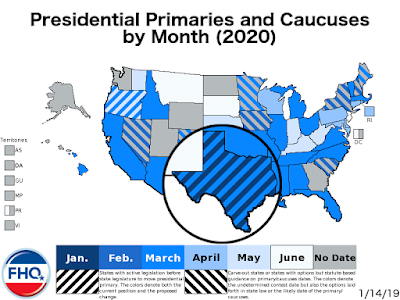Maine Lost its Presidential Primary

Since early 2016, a trend has evolved in how the 2020 presidential nomination process will operate. In that time, several formerly caucus states have abandoned the format in favor of a state-funded primary. That has happened in states like Idaho and Nebraska where there was already a primary option included in state law, but also in states like Colorado and Minnesota , where citizen-driven initiative or the legislature, respectively, created the primary option. The latter group used to include the caucus-to-primary shift in Maine . Used to . The 2016 effort to re-establish a presidential primary in the Pine Tree state passed and became law, but most of the provisions in the bill ( then law ) expired on December 1, 2018. The sole surviving component -- the only part that did not expire -- was the study the Maine secretary of state was to have conducted with respect to the funding of the election. And while that report was issued on December 1, 2017, as called for in the statute, que...



